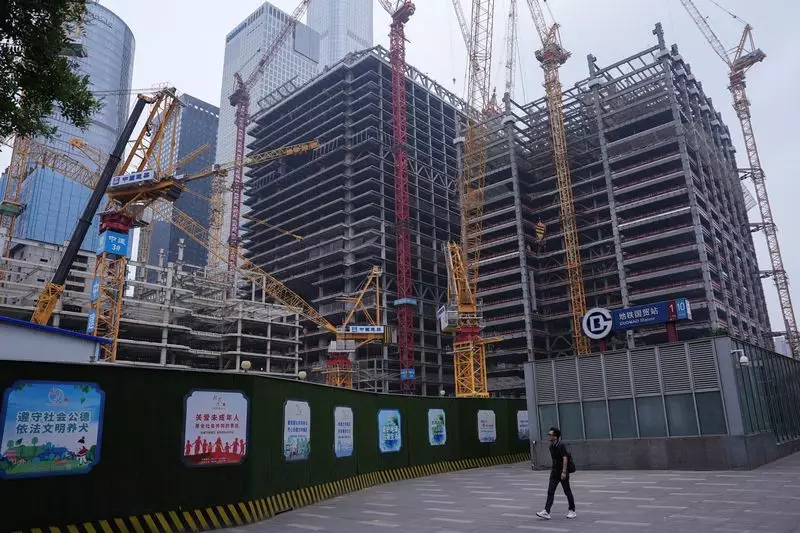China finds itself at a critical juncture in its economic narrative, grappling with a notable slowdown and increasing pressures from deflation. With aspirations of achieving a growth target of around 5% this year, officials are aware of the rising anxiety within market circles. Recent announcements indicate a potential shift in fiscal strategy, but they lack the specific details investors were hoping for, leaving many uncertain about the sustainability of a recent stock market rally.
The complexities of the current situation arise from multiple factors, including a struggling property market, stagnant consumer confidence, and significant debt levels among local governments. As the second largest economy globally, China’s challenges resonate far beyond its borders, impacting global commodity prices and trade dynamics. Fresh data out of the country continues to worry economists, highlighting the urgent need for comprehensive measures to stimulate economic activity.
Finance Minister Lan Foan expressed a resolute commitment to implement greater fiscal stimulus to revitalize the economy. This includes addressing long-standing debt issues faced by local governments, supporting individuals with low income, and infusing capital into state-owned banks to improve liquidity. However, the absence of precise figures undermines these initiatives’ potential impact, suggesting that investors may not yet have a roadmap to visualize the scale and effectiveness of forthcoming policies.
Although China’s stock market had seen significant gains recently—rising approximately 25% in the wake of Politburo meetings—those gains became tempered as concerns over specific policy implementations mounted. The anticipated legislative session to address additional borrowing is yet to be scheduled, prolonging investor uncertainty.
Investor sentiment has been teetering between optimism and anxiety. Many had hoped for a significant fiscal stimulus that might prop up market confidence and sustain stock market momentum. Industry experts have observed that while the latest policies indicate a willingness to act, a lack of quantifiable details has left the financial community feeling unsatisfied.
Vasu Menon, an investment strategist, characterized the recent announcements as an expression of intention devoid of substantial, actionable data. This may have implications for the longer-term viability of the stock market rally. Investor expectations regarding stimulus directly influence market movements, serving as a barometer for broader economic sentiments. As the global economy increasingly intertwines with China’s fortunes, fluctuations in Chinese markets can trigger widespread implications across global sectors.
Despite the government’s attempts to stimulate growth, underlying structural issues continue to loom large. Investment has been prioritized in policy decisions, often leading to an unbalanced economy heavily reliant on debt—a situation that contradicts the necessity for sound fiscal management. The International Monetary Fund’s assessment illustrates that central government debt constitutes around 24% of economic output; a figure that escalates drastically with local government debt factored in.
The realities of low household spending and high youth unemployment highlight an urgent need for innovative policy transformations that can bolster domestic consumption. As it stands, consumption accounts for around 40% of the annual economic output—twenty percentage points below the global average. The historical focus on investment over consumption needs a significant shift to create a more holistic economic environment.
Lan’s remarks imply that while there is room to escalate borrowing and improve the fiscal deficit, the path to real economic revitalization will take time and requires careful navigation. Efforts to generate concrete fiscal support, aid local governments, and replenish state bank capital are essential first steps, but sustainable recovery also hinges on ensuring that these initiatives effectively translate into increased consumer confidence and spending.
Furthermore, the impending decision to allow municipalities to repurchase unused land from property developers hints at a measured approach to address issues in the property market. The resolution of local debt dilemmas coupled with initiatives to enhance social safety nets must be prioritized to foster societal stability and economic growth.
While China’s government is signaling a commitment to financial stimulus, the absence of clear figures leaves investors and analysts in wait-and-see mode. The path ahead necessitates a strategic approach that ensures not only immediate recovery efforts but also a progressive trend toward structural reforms indispensable for long-term economic health. As the world’s second-largest economy, China’s ability to navigate these trials will crucially influence both domestic and global markets.


Leave a Reply